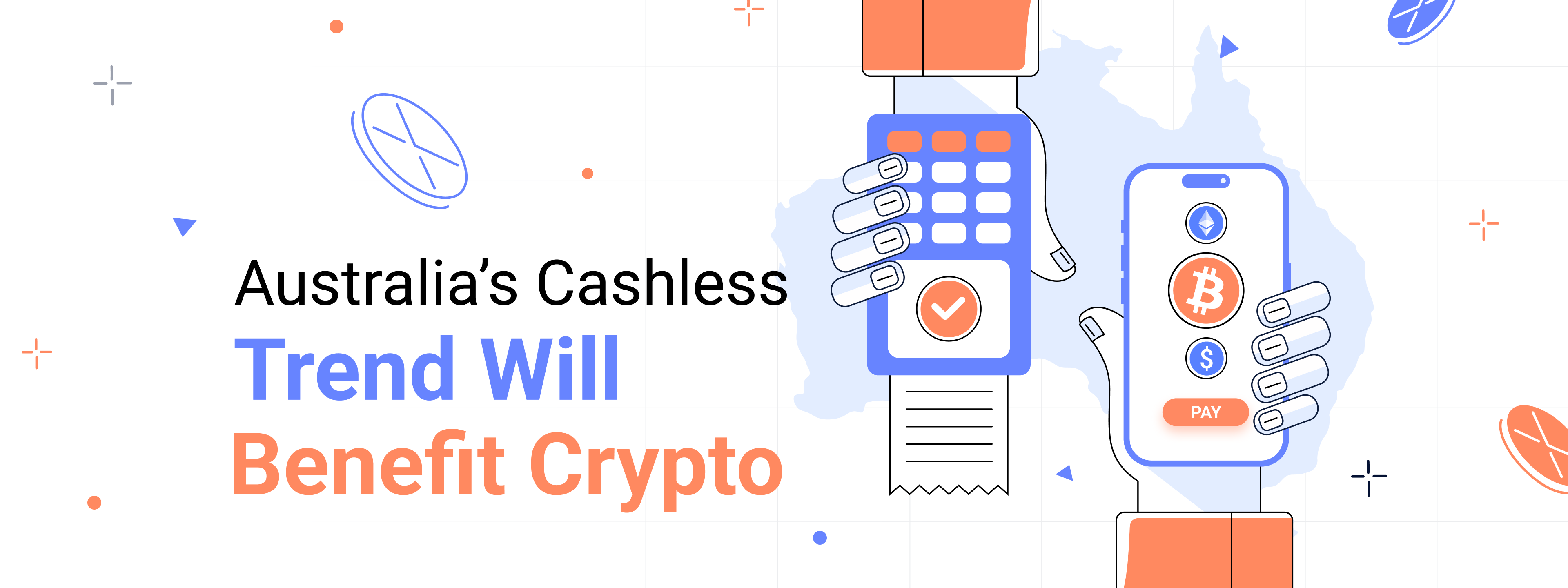Figures from the Reserve Bank of Australia (RBA), the country’s central bank, show that physical cash is slowly going out of fashion as more and more people turn to digital alternatives. While these predominantly take the form of card payments and transactions using online and mobile apps, the trend opens the way for greater adoption of other types of digital money, such as cryptocurrencies, as the idea that money has to have a physical form fades in the public consciousness.
First Fall In Physical Cash In Almost 60 Years
RBA found that over a billion dollars in banknotes had been withdrawn from circulation over the last financial year. This is the first time that a fall has been seen since dollars and cents first replaced pounds and shillings in 1966.
Use of $5, $20, and especially $50 notes fell significantly, and there is now just over $101 billion cash in circulation. Interestingly, use of the $100 note has risen slightly. However, it is expected that physical cash will continue to be replaced by electronic payments. A third of Australians now describe themselves as ‘low cash users’, meaning they use cash for less than a fifth of the purchases they make in person (i.e. excluding online payments and bills).
Cash: An Expensive Habit
There are a few reasons why consumers are using cash less. For most people, it’s largely about convenience. To use cash, you first have to acquire it, which means either getting paid in cash or, more likely these days, remembering to withdraw it from an ATM. That’s an inconvenience that most people can do without. While it might have made sense a decade ago, nowadays it’s a simple matter to make a payment by tapping a card, or better still using a mobile app that effectively acts as a personal ATM, providing you with a balance and the ability to make frictionless payments wherever you go.
Covid accelerated that process, just as it popularised other norms we now take for granted, like working from home and videoconferencing. In 2007, just 16 years ago, over two-thirds of in-person payments were cash. By 2019, it was barely more than a quarter. And three years after that, once people had got used to avoiding unnecessary physical contact wherever possible, it was down to 13 percent.
But consumers are just one half of the equation. Cash payments hide unseen costs, including the cost of moving all that money around, sorting and processing vast quantities of physical coins and notes – as well as providing security at every step of the way. In fact, the cost per cash payment averages an incredible 50 cents, according to research from the RBA. Those costs have to be borne by someone, and it’s typically banks and retailers, though of course some will be passed on to consumers. Just as cheques (which cost closer to $5 per payment) have all but disappeared from our payments system, cash looks set to go the same way.
No wonder that banks and retailers generally prefer to encourage their customers to pay using a card or mobile app. What’s more, the money moves instantly, there’s no need for secure storage, and payments can be plugged directly into businesses’ accounting and tax software.
Opening The Door For Crypto
There’s an interesting by-product to this move towards cashless payments. For most people, ‘digital cash’ means conventional money, but in digital form: electronic transactions, directly from your bank account.
But that, in itself, is a seismic change. For thousands of years, money was something you could touch, that was handed over in person. It’s only over the last few decades that it has taken electronic form, and only in the last ten or fifteen years that the average person has trusted the concept that you can use bits – ones and zeroes, travelling through the ether – to make payments. That’s a paradigm shift that opens the way for other forms of digital cash. Specifically, cryptocurrencies.
Just like Apple Pay, PayPal, or your favourite mobile banking app, cryptocurrencies like Bitcoin use digital wallets and online payments. Thanks to the proliferation of conventional payment apps, those concepts are now well embedded in users’ minds and the economy itself.
Unlike the currencies these apps handle, cryptos have no central issuers, instead relying on decentralised networks of computers to secure them and process payments. That’s the principle that sets Bitcoin and other cryptocurrencies apart from dollars, and every form of ‘fiat’ currency on Earth. It’s the root of every perceived advantage and disadvantage to Bitcoin, from its irreversible transactions (great for merchants struggling with fraudulent chargebacks, not so great for the victims of scams) to its predetermined monetary policy (giving it a reputation of ‘digital gold’).
And crypto has enjoyed the same kind of accelerating adoption that cashless payments have over the years of the pandemic. Australia leads the world in cryptocurrency adoption, coming in ahead of the US – partly thanks to its regulatory efforts. The adoption rate for crypto has more than doubled since 2020, reaching 18% of Australians in 2023.
Concerns About Going Digital
Of course, not everyone is a fan of digital money, whether fiat or crypto. Older people, in particular, risk being left behind. Crypto users largely fall into the young and tech-savvy demographic, and the same is broadly true for mobile banking and payment apps. Senior citizens and those who are unbanked or underbanked may end up struggling as their access to physical cash – and businesses that accept it – dwindles.
Still, it seems that this is an unstoppable trend, and that before too much longer, physical cash will go the way of other obsolete technologies that have been replaced by online equivalents, from VCRs to cheques. Australia is going cashless – and, importantly, that means using different kinds of online money, rather than just using regular cash in new ways.


